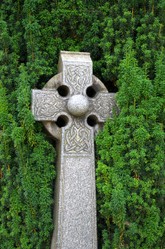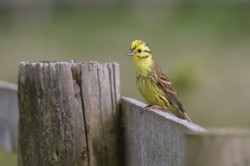It is always good to read a walking book that is written by a well-educated person who is happy to share their thoughts with readers, and Garrett Carr easily falls into this category. A lecturer in Creative Writing at Belfast University, he writes in a fluent style easy to read and manages to sustain the readers' attention.
The book takes us on a journey along the Irish border from Carlingford Lough right through to the Fermanagh lake country before it turns north through the writer's native Donegal. There is a blend of personal experience of encountering people and places and history, with a little Geology as background, all expressed in the clear language that is the trademark of an accomplished writer. Eschewing the romanticising of Ireland that bedevils some people, he gives a "warts and all" view of the places that he has visited. He is ready to speak of gun battles and murders that have occurred, and he is prepared to tell you when the terrain through which he walks is difficult and boggy and hard to cross. Yet he balances the accounts of the difficult bits with some powerful writing which opens up the landscape to readers.
Several stretches were travelled by canoe with a companion, including one of my favourite lough, Upper Lough Macnean on the borders of Fermanagh, Cavan and Leitrim. Indeed, it was the prospect of making a literary journey through my old haunts that drew me to the book.
The book can be read for leisure, but in the present febrile climate of the United Kingdom it has an undertone of immense significance. Put simply, the foolish British nationalists who have misled the people into voting to leave the European Union did not take into account the problems that leaving would cause on the still vulnerable Irish border. Or did they care? Probably not. The locals have become used to crossing the border without checkpoints, and all are thriving in this peaceful regime which gives strength to the Good Friday agreement. But with the hard exit from the EU favoured by the right, border controls will have to be erected again, and they will be countered by the traditional Irish pastime of smuggling. The Rule of the Land tackles this issue through the personal experience of the writer, and he does it well.
The border people whom he meets en route strike you as very ordinary and mostly friendly folk, and it is their voices and histories that we hear when Carr recounts their speech. We discover their fears and hopes for a peaceful and safe future, and as a border dweller for a short time I share their fears of a return to violence.






 Pilgrimage. A reviewon 06/15/2025
Pilgrimage. A reviewon 06/15/2025
 Leo the Fourteenthon 05/09/2025
Leo the Fourteenthon 05/09/2025
 The Melsonby Hoardon 03/25/2025
The Melsonby Hoardon 03/25/2025




Comments
No. We have not seen it.
There appears to have been a Gaelic-language feature film released in 2022. It carries the title Róise & Frank.
(It got my attention because of the comic filmability of the episode that you identify in the comment box dated Sep. 4, 2018, in answer to my previous, same-day belly-laughing comment and question: "Yes, Derdriu, you have divined correctly that Upper Lough Macnean is a place that I really like. If you laughed at the bit about smuggling, you will love this one. A colleague of mine was on the border and saw the rather easy going customs officer standing looking eastwards, while behind him to the West a group of Irishmen were smuggling a herd of cattle across the river from Eire into Northern Ireland.")
Might you and your wife and your family or Veronica and her husband and her family have seen the aforementioned film or heard tell about it?
The Irish propensity to smuggle derived from a recognition that rules made by a conquering power had no moral claim to be obeyed.
Smuggling in Ireland was part of a wider issue, right across the UK,for in the 18th century the Southern English smuggled masses of goods.
frankbeswick, Thank you for the review.
When I read this article previously, I didn't see your answer to my question. It's most generous of the people of Eire to share their bounty with neighbors and even to work out direct supplier-receiver interactions without middlemen or (for the sake of the trees) paper trails.
The Irish Times published an article, Nurturing Responsibility in Cavan's Open Prison, by Sylvia Thompson May 8, 2018. The author references another open prison in Shelton Abbey, County Wicklow. Wikipedia says that Shelton Abbey sheltered King James II of England after the Battle of the Boyne.
Perhaps a certain kindness was preserved there and in your former seminary.
Yes, Derdriu, you have divined correctly that Upper Lough Macnean is a place that I really like.
If you laughed at the bit about smuggling, you will love this one. A colleague of mine was on the border and saw the rather easy going customs officer standing looking eastwards, while behind him to the West a group of Irishmen were smuggling a herd of cattle across the river from Eire into Northern Ireland.
frankbeswick, Thank you for the journey and the products. You have a way with words, such as the phrase that leaves me belly-laughing over the "traditional Irish pastime of smuggling." Is Upper Lough Macnean a favorite of yours before, during or since seminary years?
Now that's a very long trail. I have read a bit about it. I hope that one day you manage to do it.
I've never been on a walking tour, although I take a walk almost every day. On the east coast of the U.S., there's the Appalachian Trail, which is 2,190 miles and goes through 14 states. I'd like to try a section of it some day.
Canoes came back to Britain through American influence. They were known in prehistoric times, but fell from favour and were replaced by the rowing boat. But the Welsh kept their coracles.
Brexit gets worse as the incompetent weakling that we have as prime minister stumbles from one disaster to another as she tries to square the circle to make an unworkable arrangement work, while the right wing bullies behind Brexit circle round her putting on the pressure for the hard Brexit that they want.
The intractable issue is the Irish border. The Good Friday agreement insists that there be an open border with no customs controls; a hard Brexit involves our leaving the European Union single market and customs union, and therefore customs controls have to be imposed. These two positions are contradictory and cannot both happen. But the PM is trying to keep her job by appeasing the forty or so right wingers who are threatening to unseat her from her position by voting against her in a leadership election.
Now we find out that the Leave campaign broke electoral rules by secretly overspending beyond legal limits. They have been fined and two leaders reported to the police. Therefore there is now a growing demand for another referendum. And the clock is ticking towards deadline day!